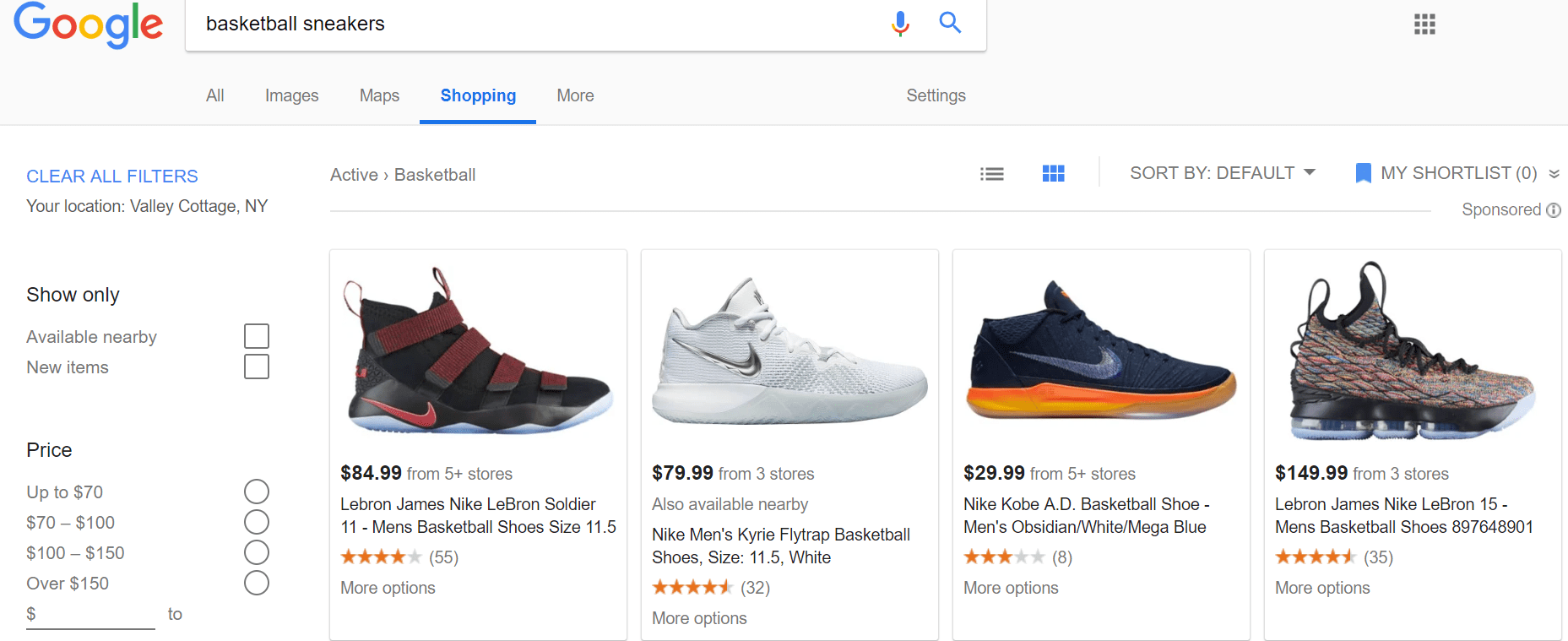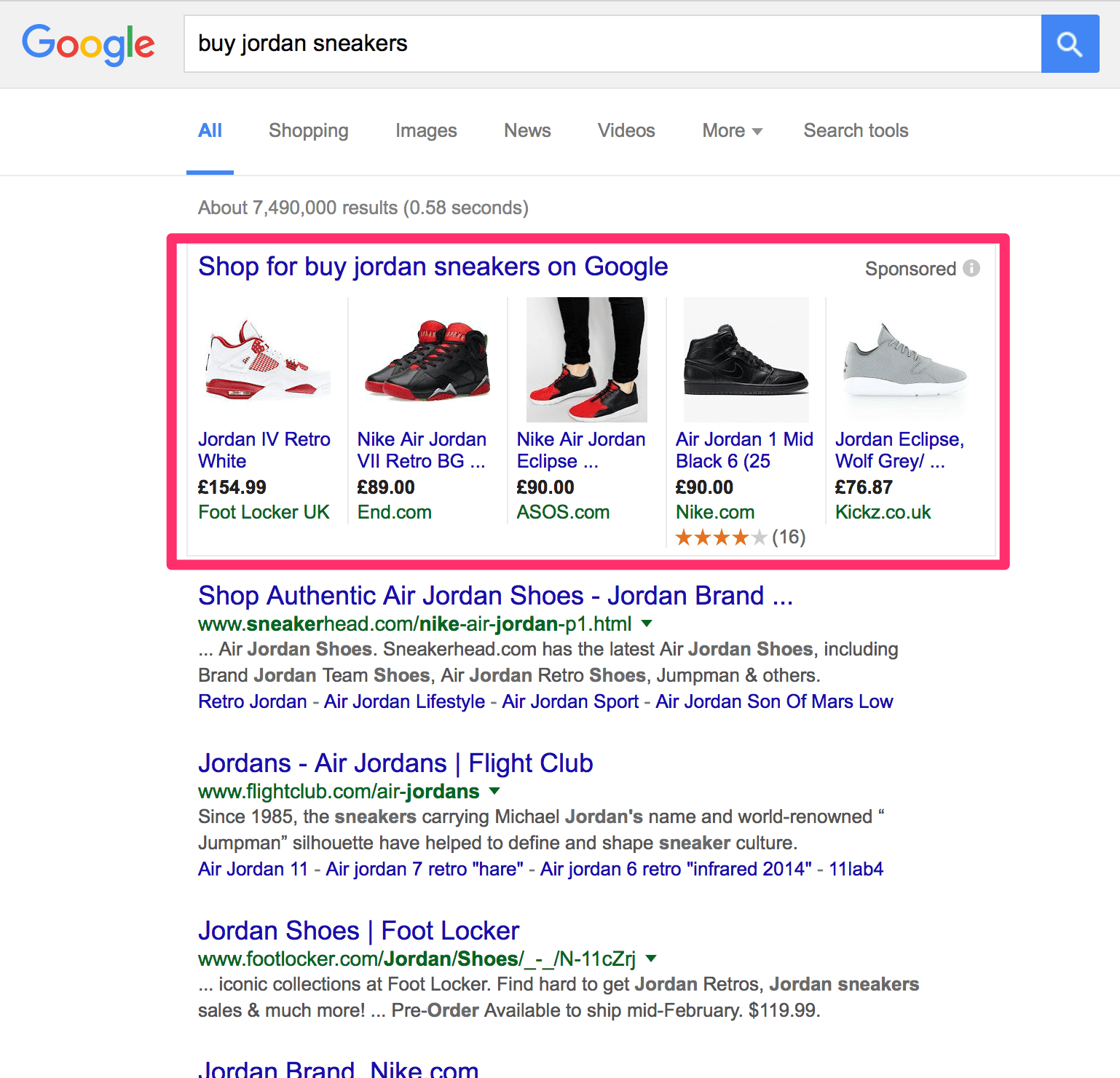Google is the world’s most popular search engine. These days, people aren’t just using Google for research purposes or finding answers to their questions—they’re using it to shop.
With Google at their fingertips, consumers can look up a product they’re interested in instantly. According to Google, 59% of shoppers surveyed say they use Google to research a purchase they plan to make in-store or online.
So, if you want to drive more traffic to your site and increase sales, you need to incorporate Google into your eCommerce marketing strategy. If you can capture consumers’ attention while they’re doing product research on Google, they’ll be more likely to buy from your business.
But aside from optimizing your site for
Here’s how to boost your eCommerce sales using Google.
Take Advantage of Google Shopping Listings
Earlier this year, Google announced that businesses can display their products in Google Shopping listings for free.
Google Shopping is a separate section of Google. When a consumer types in a search query like “basketball sneakers,” they can click on the Shopping tab to see ads with products related to their keywords. Once they find a product they like on the Shopping tab, they can click through to the online retailer and buy.

Previously, only businesses that were running Shopping Ads could display their products in the Shopping tab, but now it will be a mix of free and paid.
Consumers that click on these Shopping listings typically have a stronger intent to buy because they can see what the product looks like, how much it costs, etc., which they can’t see in regular text-only Google results. So, be sure to take advantage of the free listings to increase your conversions.
To get started with free Google Shopping Listings, head to Google’s Merchant Center to create a free account. Follow the steps, which include uploading your product feed, to take advantage of the free listings.
Note: This feature is only available in the United States currently, Google has plans to offer free Shopping Listings globally in the future.
Create Google Shopping Ads
Just because you have the option of free Google Shopping Listings, doesn’t mean that you shouldn’t invest in Google Shopping Ads as well.
Why?
Free Shopping Listings will still be displayed under the paid listings in the Shopping tab. Also, with the free Listings, you won’t be able to get your product on Google’s main search tab like in the example below:

So, while free listings can still help drive more traffic and sales, the paid listings can skyrocket your revenue; when a shopper types a search query into Google, your products can be displayed front and center. Instead of sifting through a bunch of Google results, users can see products they’re interested in immediately, right at the top of the main page.
It might seem difficult to create Google Shopping Ads at first, but Google has a lot of easy-to-follow documentation to help you out. These resources will help you choose the correct campaign type, choose the products to display, set your daily budget, and more.
Brick-and-mortar retails stores can take advantage of Google Shopping Ads as well. You can choose to display information about inventory in retail locations so that local mobile users can see if a store has the product they want in-stock. Office Depot took advantage of this feature and saw a 3X return on its digital marketing spend.
Watch Out for ‘Buy on Google’
In early 2021, Google will provide online stores with yet another way to drive more sales. This new feature is called ‘Buy on Google’. Buy on Google lets users purchase products from eCommerce stores, without leaving Google. All eCommerce merchants will be able to take advantage of this feature and it’s commission-free.
So, how exactly can Buy on Google help eCommerce businesses increase their sales?
This feature makes it quick and easy for consumers to make purchases online. For example, say a shopper searches on Google for a toaster. Instead of clicking through a number of different eCommerce sites, the shopper can simply click on the Google Shopping tab to check out different product listings. When they find a product they like, they can click on “Quick Checkout” or “Add to Cart” and make their purchase in seconds, without leaving Google.

This convenience can lead to a boost in conversions; the less work a shopper has to do in order to buy, the better.
Now that Google Shopping is covered, you can’t forget about another valuable tool from Google—Google Analytics!
Use Google Analytics
As mentioned previously, you’ll want to optimize for
But, there are other ways to use Google Analytics to boost your revenue.
You can use Google Analytics to:
- Track eCommerce transactions
- Discover KPIs like average order value, per session value, bounce rate, etc.
- Learn more about your website visitors
- View the shopping behavior of users on your site
- Track shopping cart abandonment
- And much more
These valuable insights will help you make informed business decisions.
For example, you can use Google Analytics to see which product categories or product types drive the most purchases from your Google Shopping campaigns. Based on this information, you can invest more in the Shopping campaigns that are performing the best, to boost your sales even more.
Over to You
While there are a number of effective eCommerce marketing strategies you can use to grow your sales, such as email marketing and social media, you can’t forget about where it all starts—Google. When you present your products to consumers during their initial Google searches, it makes it super easy for them to buy from you. Start implementing these strategies today and wait for your eCommerce conversions to rise.
Woman doing online shopping -DepositPhotos


